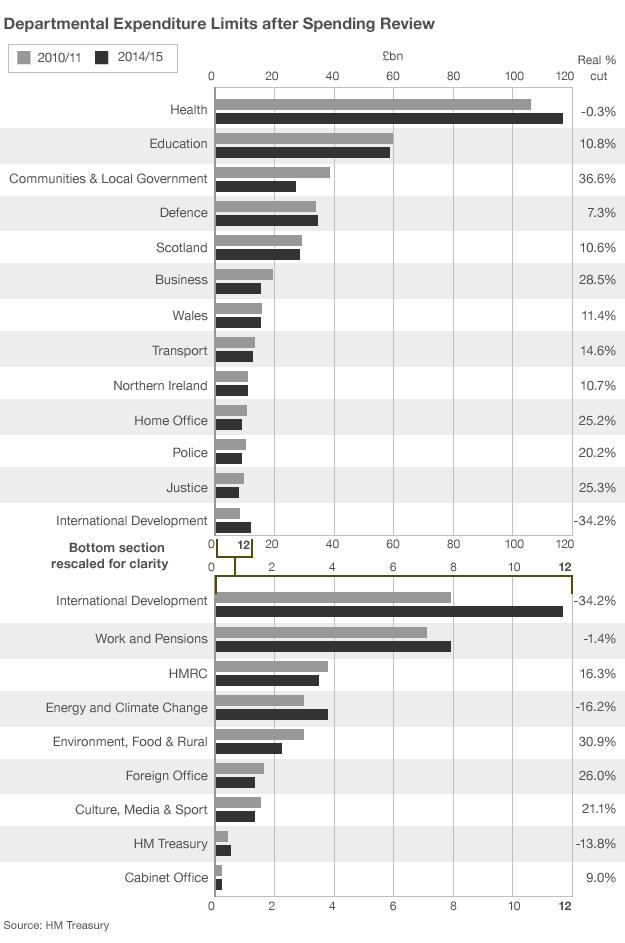Spending Review: Making sense of the figures
- Published
When Chancellor George Osborne says that he wants to cut real spending on defence by 8% by 2014-15, what does he mean?
It seems obvious: it means that the Ministry of Defence's spending in 2014-15 will be 8% less than it was in 2010-11.
Unfortunately, when it comes to government spending, it is not that simple.
The complications are not just a result of difficulties with individual departments, for example, there will be extra money from government reserves to fund the war in Afghanistan if it is needed.
The main problem is that there are several measures of government spending and it is not always obvious which one is being used.
The major division in spending is between Departmental Expenditure Limits (DEL) and Annually Managed Expenditure (AME).
This is an important distinction, because in the simplest terms, DELs cover spending over which departments have some control, while they can do much less about AME items.
DEL spending covers things like employing staff, paying for buildings and buying equipment, which is why the Spending Review concentrated on this measure.
These are the full cuts in DEL spending. While some departments appear to have an increase in cash terms by 2014/5, when adjusted for inflation they will have less funding in percentage terms.

Most departments also have AME spending. The biggest item of AME is social security, but it also covers things like debt interest and public sector pensions.
Officially, social security comes from the Department for Work and Pensions, but the amount that it costs depends on things like the level of unemployment and the average age of the population. Levels of AME spending are normally forecast rather than targeted.
'Saving'
When Mr Osborne said he wanted to cut defence spending by 8%, he gave a figure, which made it easier to tell what he was talking about.
"The budget for the Ministry of Defence will reach £33.5bn in 2014-15. A saving of 8% over this period," he said.
The £33.5bn figure is the target for total DEL spending in 2014-15. In fact, the Treasury's figures show that DEL spending will be falling by 7.5%, but both Mr Cameron and Mr Osborne have rounded that up to 8%.
Using the figures provided by the Treasury, the cut actually appears to come out at 7.3%, although the Treasury says that is because the published figures have already been rounded and the full figures would indeed come out at 7.5%.
The difference sounds small, but a 0.1% change in the defence budget makes a difference of more than £30m.
Even the rounding from 7.5% to 8% is making the cut sound more than £150m more than it really is.
If Total Managed Expenditure (DEL plus AME) is considered, the cut is even smaller, coming in at 5.9%.
Spending figures are a very complicated area, which is a problem, because small changes make a big difference.